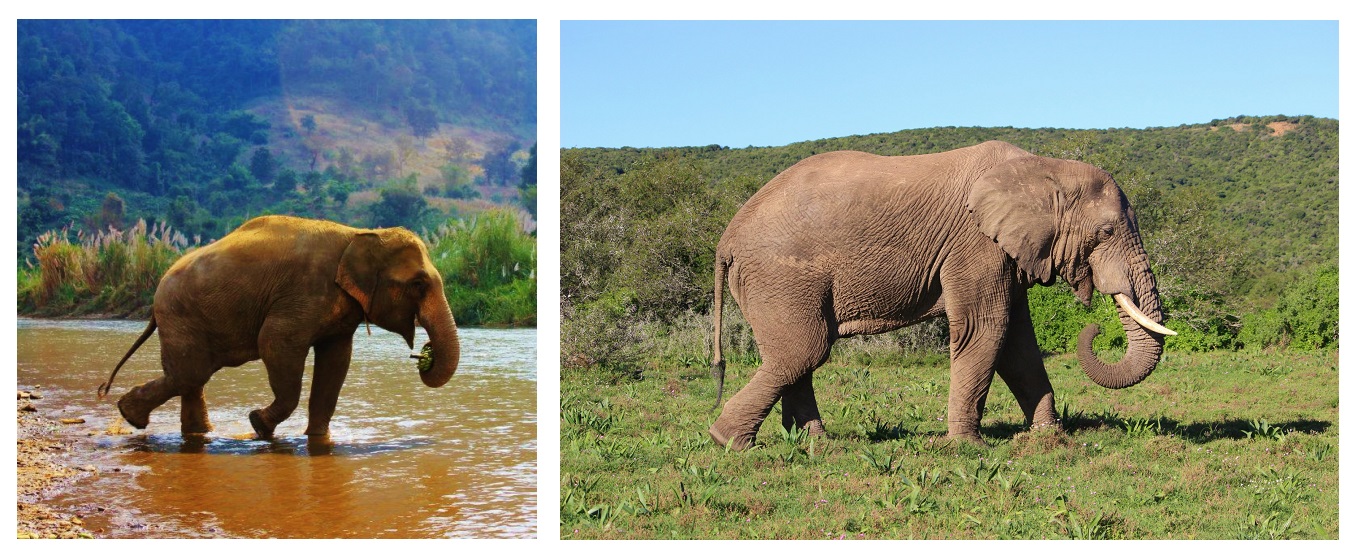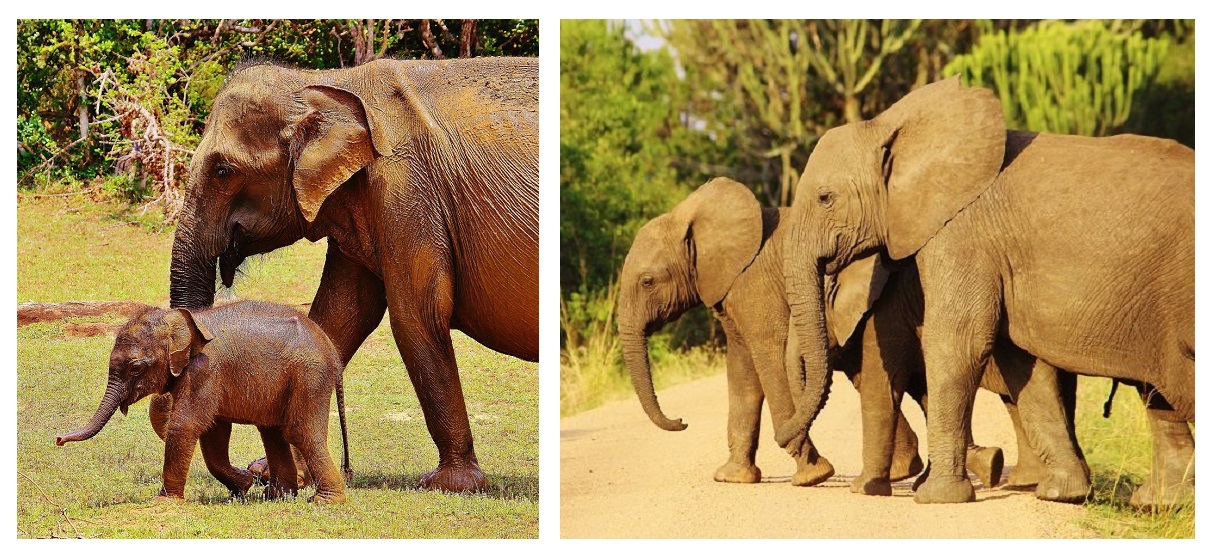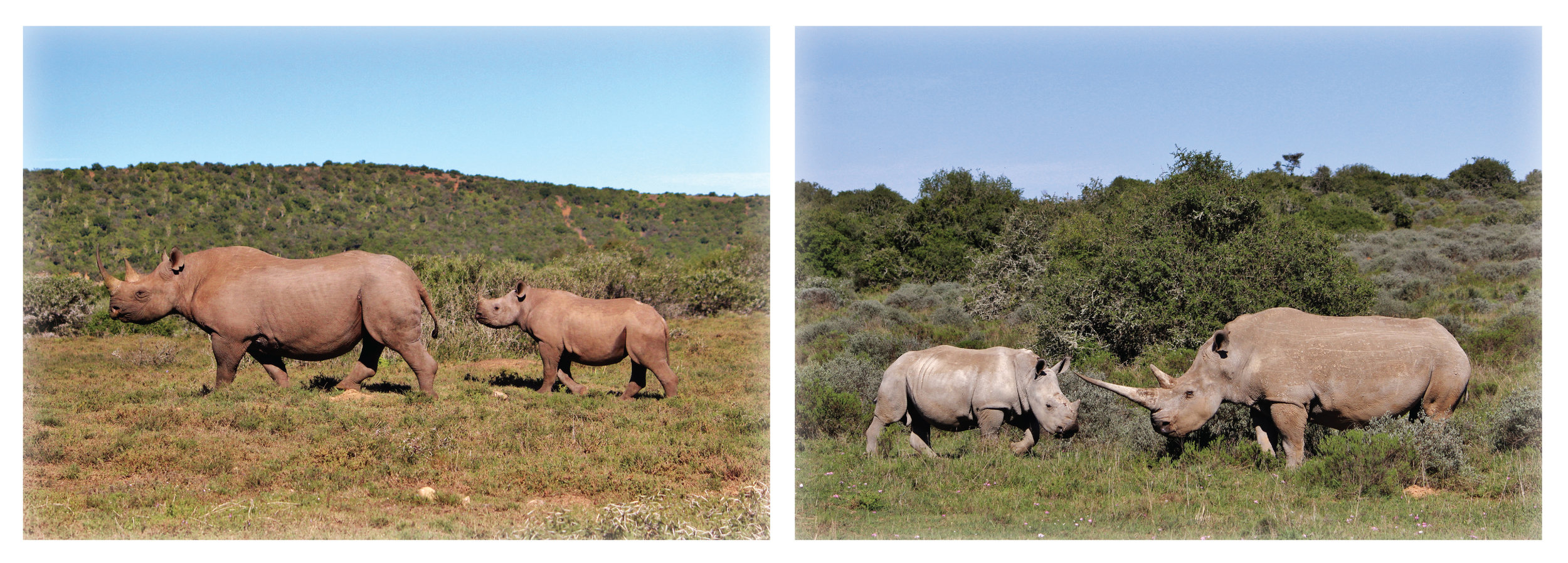Elephants are truly extraordinary creatures. The burly beasts that roam the forests, deserts, plains and savannas of this world claim the title of largest land animal - with their unique physiques making them one of the most iconic animals that walk the earth today.
They belong to the aptly named taxonomic family Elephantidae, which is composed of three different species: the African bush elephant (Loxodonta africana), the African forest elephant (Loxodonta cyclotis), and the Asian elephant (Elephas maximus).
While the African bush elephant and African forest elephant do possess some recognizable differences, they remain relatively subtle aside from the enormous difference in overall size. This article aims to highlight the most easily distinguishable features between the more common African species (the bush elephant) and the Asian elephant.
Identifying each species should be a breeze considering that Asian and African elephants inhabit entirely different parts of the planet, but below you will find information on the most easily identifiable physiological differences.
Size
Note that the Asian elephant (left) is female and the African elephant (right) is male. Even when comparing similar photographs, it can be hard to gauge the difference in size.
At a glance, comparing the sizes of any two things can be challenging when not positioned side-by-side. Due to their entirely differing world distribution, this has only been made possible with human intervention. The Asian and African elephant may seem to be similar in size, especially when comparing them against all other species. However, the average African bush elephant is far greater in size than their cousins from the East. While Asian elephants can weigh up to 5,400 kg and reach heights of 2.7 meters, the African bush elephant can grow up to 80 cm taller and almost a ton heavier. Incidentally, the African forest elephant is the smallest of the three species, with males rarely exceeding heights of 2.5 meters and masses not in excess of 2.7 tons.
Tusks
Aside from the odd individual, all African elephants whether male or female possess impressive ivory tusks, but many Asian elephants do not. In fact, female Asian elephants are not equipped with any tusks at all, with about 50% having small tusk like teeth referred to as tushes. The percentage of males with ivory varies depending on the region, which is possibly reflective of the intensity of hunting in the past. For example, only 5% of bulls in Sri Lanka sport the long modified incisors, whereas around 90% of the population in southern India boast them.
Ears
Notice that the ears on the Asian elephant (left) are far smaller than those of the African elephant (right)
Perhaps the most easily distinguishable feature between Asian and African elephants are their ears. Shaped similar to the continent in which they inhabit, the African elephant's ears have a far larger surface area - an evolutionary adaptation to keep them cool in the scorching temperatures. Owing to the fact that most Asian elephants dwell in cooler jungle areas, they have less to worry about in terms of overheating. Therefore their ears are a lot smaller.
Skin
The Asian elephant (left) has far smoother skin than their wrinkly African cousins (right).
Another adaptation to regulating body temperature and a feature that is a little less conspicuous is the "wrinkliness" of each species’ skin. While not particularly obvious at a glance, the African bush elephants have far more wrinkles on their skins as opposed to their Asian counterparts. This adaptation helps them to retain more water and mud over their huge bodies which helps to keep them cool in the blazing African sun.
Head Shape
Asian and African elephants have very distinct head shapes with the former displaying a twin domed skull complete with an indent in the middle. African elephants tend to have fuller and more rounded heads owing to the fact that their skulls are composed of a single dome. Further, it can easy to distinguish between the sexes of African bush elephants by observing the contrasting shapes of the foreheads. While females and younger elephants have a very angular shape, mature males' are more curved.
Trunk
Look for the two small finger-like appendages on the tip of the African elephant's (right) trunk as opposed to just one on those of the Asian elephant (left)
The major difference between the species’ trunks lies in the form of the tip. While the African elephant has two very distinct “fingers” at the end of their elongated snouts, the Asian elephant possesses just one. Similar to human fingers and thumbs, the dexterous appendages help the elephants to pick up and manipulate objects.




















